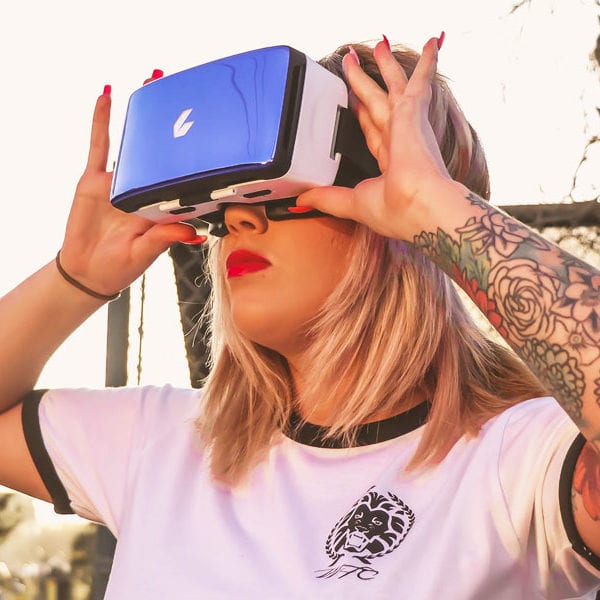
Why VR is Worth Testing Now
Creating more immersive experiences has been the goal of storytellers since humans first gathered around the campfire and added a lion's roar to their tale of the hunt. The stunt-loving film director William Castle electrified seats in the '50s for "The Tingler" to literally add extra shock value! John Waters infamously included "Odorama" scratch and sniff cards for screenings of his 1981 cult classic, "Polyester." More recently, 4D theaters have been offering wind, water, smells, jostles and even pokes in the back to make sure we are transported beyond the humdrum.
Not to be left behind, brand storytellers are joining this "experience rush" by testing relatively new media platforms like virtual reality. Recognizing this trend, Zoo, the creative think tank at Google, initiated an anthropological study on VR 180-degree and 360-degree video. Zoo is now working with brands to capitalize on its findings. To understand what all this means for CMOs, I interviewed Abigail Posner, head of strategic planning at Zoo. A student of anthropology herself, Posner's insights reveal a world of opportunity, especially if marketers are prepared to approach these channels with open minds.
What were some of the key findings from the study?
The biggest "aha" with VR, unlike any other type of story experience -- and I'm talking about campfire, movie, book, whatever -- is this is not about story telling. It's about story living. Because, from the second you put whatever that headset is on, you are totally immersed in this experience. And it's not an immersive story like someone telling you a story; there's no narrative frame. You're breaking all the conventions of what you experience until now about story -- someone guiding you through, someone telling you what's supposed to happen, someone giving you the implications that you're supposed to come away with. Instead, you jump into this experience. You are totally absorbed. What marketer is not going to want somebody totally absorbed on their brand? Nothing distracting them. And what happens is their brains go into this different mode.
This has big implications for what most of us think of as storytelling, right?
There are no assumptions anymore about what a story should be like. What they're experiencing is something highly sensory, highly visceral. It's not about being persuaded; it's not about language. You go and you figure it out on your own. There's nobody guiding you. And so, because the whole narrative frame is broken, because all the expectations of what a story should be is broken, all of a sudden our minds are open. And what marketer wouldn't want an open mind regarding their brand and their category? That puts us into a totally different state.
What happens in the end is that we have a very different type of experience where we get to the essence of this place or space or person. Essentially, we're evolving from storytelling to story living.
The consumer cynic in me is saying, "I don't want to experience brands."
The one thing [marketers] always want, especially CMOs, is people to connect with their brand. They want people to see the meaning of their brand, the value of their brand. There would not have been brands ever in existence if there wasn't something [more] that users, human beings, consumers, whatever you want to call us, wanted from a commodity. We want to ascribe value to things. That is why brands were born, and that is why we still, somehow, see value in brands. So when you say people don't want to connect with brands, I disagree. I think they don't want to connect to brands the way that brands have been served up until now.
With VR, you're getting to the essence of the brand, the essence of the meaning. What we're really doing is allowing CMOs to move from messaging to meaning-making with their brands, which is ultimately what they want.
Do you have an example of what this looks like for a brand?
Guinness did a 360° experience inside a convenience store, where you can experience the colors and sounds of what beer should taste like. Here it is: "The colors, shapes, and sounds that have been scientifically proven to enhance the flavor profiles of each beer." So you're not hearing and imagining how great the beer is, you're experiencing the beer on all of its essential levels.
I'd expect entertainment-oriented brands like Guinness and Heineken to jump into VR. How about a more surprising example?
Google helped create a 360° experience for the National Highway Traffic Safety Administration called Last Call 360°. Why? Because, for the longest time, they were sharing stories about what happens when you kill somebody because you were drunk, or you get killed because you were drunk. They weren't working. So we created an experience where people with a cardboard headset can actually start experiencing what it's like to be drunk. So they are playing games in a bar. And, all of a sudden, because of the way the technology works, the voices around you are starting to be slurred. Things are starting to slow down. And so, all of a sudden, you as a human being are sensing what it's like to feel drunk. You recognize, "Oh my gosh. This is what my brain is going through as I drink more and more and more. I am understanding the essence of what it's like to be drunk. I don't want to sit behind the wheel now because now my regular conscious self knows what it's like to be a drunken self."
Final note: VR is expected to grow from 22.4 million users in 2017 to 49.2 million VR users in 2019, according to eMarketer. Progressive CMOs are well advised to start testing VR now, especially because it will take some time to get the knack of this new form of storytelling.